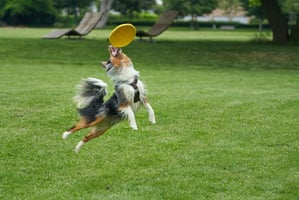Training a puppy is an important part of pet ownership. An 8-week old puppy is still young and...
3 Month Puppy Training: Your Step-by-Step Guide
Training a puppy can be a daunting task. But with proper guidance and patience, you can teach your 3-month-old pup the basics of obedience and house training. This guide will provide a step-by-step approach to 3 month puppy training.
Step 1: Establish a Routine
The first step to successful 3 month puppy training is to establish a routine. This will help your pup to know what to expect and when. Some basic things you should include in your pup's routine are:
- Feeding: Feed your pup at the same time each day and stick to a regular schedule.
- Potty Breaks: Take your pup out for potty breaks at least every 3-4 hours.
- Playtime: Spend at least 30 minutes a day playing with your pup.
- Exercise: Take your pup for a walk or run at least once a day.
- Sleep: Put your pup to bed at the same time each night.
Step 2: Set Boundaries
The next step in 3 month puppy training is to set boundaries. This means teaching your pup what is acceptable behavior and what is not. It is important to be consistent with your pup and to always reward good behavior. Some ways to set boundaries include:
- Crate Training: Crate training is a great way to teach your pup where it is ok to go to the bathroom and where it is not.
- Leash Training: Teaching your pup to walk on a leash will help them to understand when it is ok to leave the house and when it is not.
- No Chewing: Teach your pup that it is not ok to chew on furniture, clothing, or other items.
- No Jumping: Jumping is a common behavior in puppies, but it is important to teach your pup that it is not ok to jump on people or furniture.
Step 3: Teach Basic Commands
The third step in 3 month puppy training is to teach your pup basic commands. This will help your pup to understand what is expected of them and will help to keep them safe. Some basic commands to teach your pup include:
- Sit: Teach your pup to sit on command. This will help them to understand when it is ok to move and when it is not.
- Stay: Teach your pup to stay in one spot until you give the command to move.
- Come: Teach your pup to come to you when you call them.
- Down: Teach your pup to lie down on command.
- Leave It: Teach your pup to leave something alone when you tell them to.
Step 4: Socialize Your Pup
The fourth step in 3 month puppy training is to socialize your pup. Socialization is important for puppies because it helps them to learn how to interact with other animals and people. Take your pup to the park, on walks, and to puppy classes. This will help your pup to become comfortable with new people and animals. It will also help them to learn proper social behaviors.
Step 5: Use Positive Reinforcement
The final step in 3 month puppy training is to use positive reinforcement. Positive reinforcement is a great way to reward your pup for good behavior. This can be done with treats, toys, praise, or a combination of all three. Reward your pup for good behavior and ignore bad behavior. This will help your pup to understand what is expected of them and help them to learn more quickly.
Conclusion
3 month puppy training can be a daunting task, but with proper guidance and patience, you can teach your pup the basics of obedience and house training. Establish a routine, set boundaries, teach basic commands, socialize your pup, and use positive reinforcement for best results. With a little bit of effort and consistency, you can have a happy and well-trained pup in no time!



